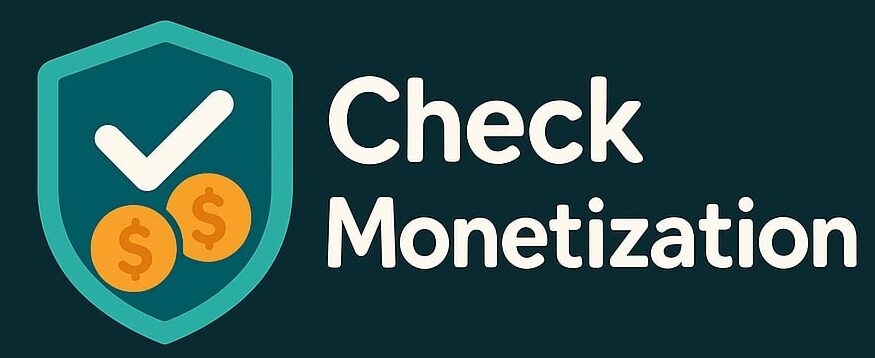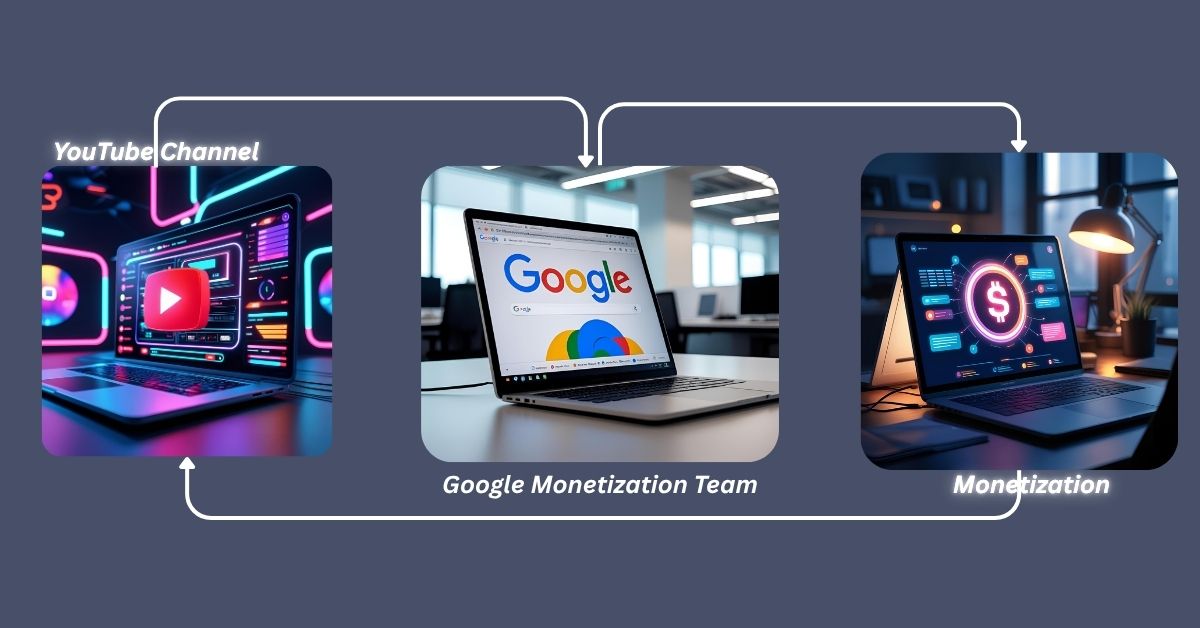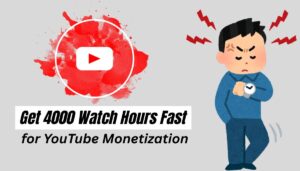Getting your YouTube channel monetized is a big milestone for creators. But how does Google actually determine if your channel is eligible for ads and other revenue-generating features?
From how algorithm evaluates your content to the manual checks done by human reviewers. It doesn’t matter if you are just starting out or you’re close to mark, knowing how Google checks monetization for a YouTube channel is very crucial to ensure fast approvals.
Table of Contents
How Google Checks for Monetization?
After I made an application to monetize my account, Google didn’t just glance at my number of subscribers.
Google ran a thorough review employing both artificial intelligence systems as well as humans as reviewers.
A. YouTube Algorithm for Monetization
The YouTube algorithm for monetization carried out first sweep, by analysing:
- Metadata – It was able to scan titles tags, descriptions, and titles for authenticity and relevance.
- Audio Visual Content – It was able to review each frame as well as the audio tracks.
- Captions and Thumbnails – AI searched for false images as well as auto-generated captions which misrepresented contents.
Review was a way to determine the YouTube authenticity level that is an internal sign-off YouTube employs to evaluate content’s quality and originality.
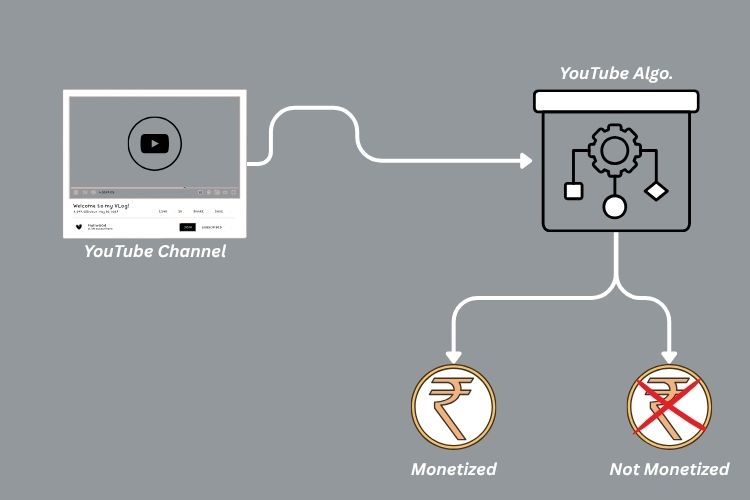
B. Human Review Process
After I had cleared algorithmic checks After that, a human reviewer examined my channel. They assessed:
- Originality of my content and production value
- Engagement metrics: Likes, comments, and watching time
- Design and consistency of the channel
- Ad-suitability is based on YouTube’s ad suitability review guidelines

What Is YouTube Authenticity Status?
Status of my YouTube authenticity score was basically an assessment of trust score Google assigned to my YouTube content.
- I re-used clips, but without any making any significant modifications
- I created AI-generated narration using footage that I had already purchased.
- My content retold same themes or images in different videos.
Maintaining a high level of authenticity is essential in YouTube policy on monetization for 2025. If my score were low, even a high score won’t be able to help.
Common Reasons Google Rejects Monetization Applications
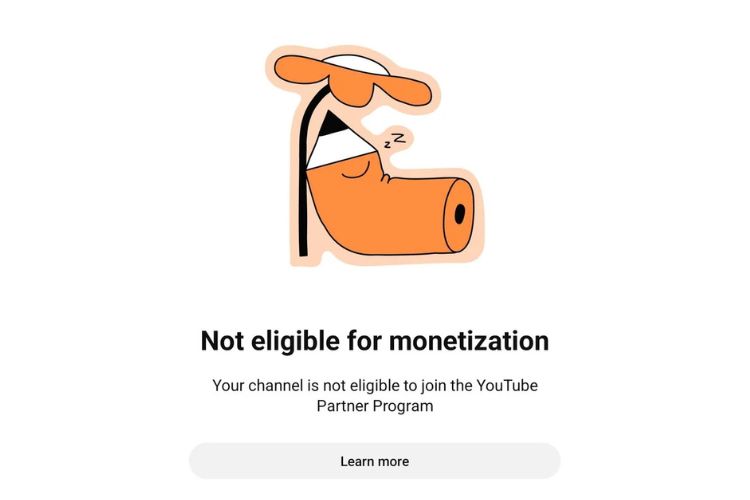
I looked up creators who were rejected and discovered that they are among most common reasons:
Reason No. 1 – Inauthentic Content
- Robotic voiceovers, with no visual involvement
- Slideshows that use scraped or stock content
- TikTok Reuploads or meme compilations
Reason No. 2 – Misleading Content
- Use of tags in a way that is not relevant or keywords
- Thumbnails that don’t match the actual video
- Metadata stuffing
Reason No. 3 – Copyright Infringement
- Utilizing popular songs without need for a license
- Uploading movie or TV clips
- Reusing images without authorization
After I had removed any content that was questionable I increased my odds of being approved.
YouTube Channel Audit: What Google Evaluates?
Before approving my request, Google performed an Youtube Channel audit.
| Audit Area | What Google Looks For |
|---|---|
| Channel Branding | Banner, logo About section, banner |
| Video Library | Consistency, originality, upload schedule |
| Audience Engagement | Shares, comments, likes and community posts |
| Policy Compliance | Past strikes copiesright issues, past strikes, restrictions on age |
| Ad-Friendliness | Content language, sensitive topics, advertiser safety |
I ensured that everything was original, professional and in accordance with guidelines for advertisers.
Steps I Took to Improve My Monetization Approval Odds
1. Focused on Original Content
- My voice was recorded, and was captured on camera
- I have created tutorials as well as opinions pieces.
- I utilized storytelling and editing to increase the value of my work.
2. Cleaned Up My Channel
- I deleted any low-effort or repetitive videos.
- I changed the thumbnails and title to reflect latest video content
- I removed the content that was reused or I added a comment to make it more interesting.
3. Followed Monetization Best Practices
- I stayed clear of controversial topics as well as profanity
- I have clearly stated affiliate links
- I abided by music licensing and also added credits
Tools I Used to Track YouTube Monetization Eligibility
1. YouTube Studio
- I went to on the section titled Monetization to monitor the number of subscribers and hours watched.
- I have filtered my videos based on monetization status so that I could spot problems early.
2. YouTube Monetization Checker
- I used third-party YouTube Monetization Checker tools like CheckMonetization.com to see if I met all criteria.
- I utilized an YouTube revenue calculator to calculate my earnings potential.
FAQs
What is time frame YouTube need to wait for a monetization approval in 2025?
Usually, 1-2 weeks, however in some instances up to 30 days, depending on the volume.
Can I apply again if not accepted?
Yes. You are able to reapply within 30 days. Make the necessary adjustments prior to reapplying.
What is fake content on YouTube?
Any reused, low-effort or AI-generated material that does not undergo transformation or originality.
How can I determine my the monetization eligibility?
Visit YouTube Studio > > Monetization, or make use of an YouTube checker to determine monetization.
Does the YouTube algorithm check the content?
Yes. It is true that the YouTube algorithm that monetizes is the first stage of review by using AI.
Making money on YouTube in 2025 isn’t only about viewers and subscribers time. I needed to prove that my content was original, entertaining and in line with YouTube policy on monetization and guidelines that are friendly to advertisers.
In everything from AI scanning to human-generated reviews, Google checked my channel carefully. I was consistent, stayed clear of fake content and made sure that every video had worth. This is how I was able to get my approval.
